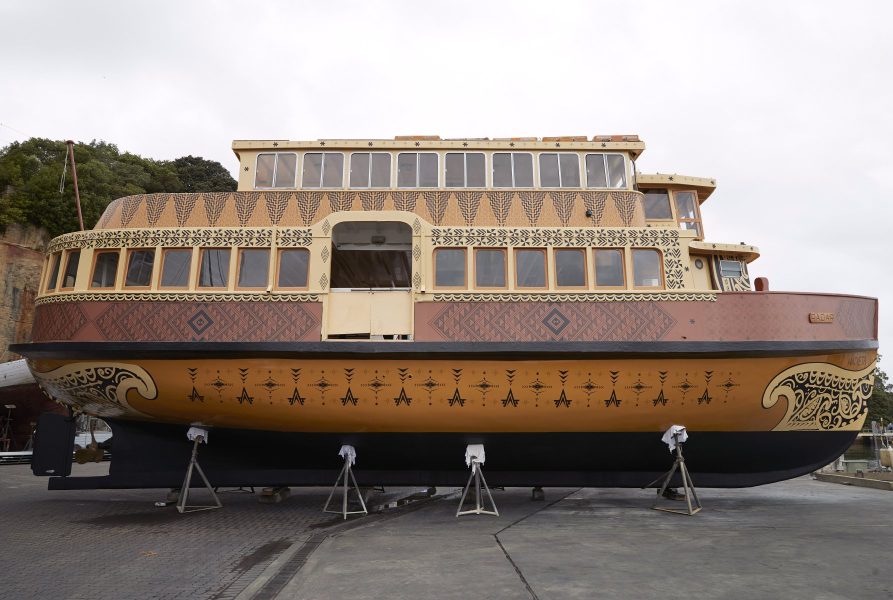
BE.
Established:
In 2017
Based in:
Wurundjeri and Boonwurrung lands, Melbourne, Australia
Grace Dlabik
Born:
1979 in Vienna, Austria
Lives in:
Naarm / Birrarung-ga / Melbourne, Australia
Paige Uāmaki- Mu
Born:
1994 in Central Coast, Australia
Lives in:
the land of the Yugambeh people, Gold Coast, Australia
Tavao Lilia Fa'avae-Eli
Born:
Tokoroa, New Zealand
Lives in:
the Dharawal / Campbelltown, Australia
Fern Ngatai
Born & Lives in:
1997 in Auckland, New Zealand
Aunty Sana Balai
Born:
Buku Island, autonomous region of Bougainville, Papua New Guinea
Lives in:
Naarm / Birrarung-ga / Melbourne, Australia

BE.
Grace Dlabik
Paige Uāmaki- Mu
Tavao Lilia Fa'avae-Eli
Fern Ngatai
Aunty Sana Balai
A Sydney ferry called Radar was created in 1947, it is now re-born in 2020 as Haiveta and is the ‘mother’ of the Rosman boat fleet on Sydney Harbour. She remained in continuous service for more than 60 years and has undergone a complete refurbishment for the Biennale of Sydney, to form a dynamic moving artwork.
BE., ‘NIRIN HAIVETA’, 2020. Commissioned by the Biennale of Sydney with assistance from Noakes Group. Photograph: Zan Wimberley.
“For NIRIN, BE., in collaboration with Noakes Group, mark a sailing vessel to reactivate the memory of women’s tattoo practice outlawed through colonisation.
Haiveta pays homage to the richness of Pasifika women’s markings worn by our ancestors, passed down through bloodlines that tell a visual story of our heritage, identity and culture. This tradition in many parts of the Pacific has been disrupted through the effects of colonisation and the impacts of missionaries inflicting shame for sacred practices.
The first part of her name, HAI, means heart in Toaripi language from Papua New Guinea. To express the depth of ‘big heart’ the word HAI is often used. Together Haiveta means heartfelt comforter.
Through her powerful visual presence, and migration along the waterways and channels of Sydney Harbour, Haiveta creates a safe passage to reclaim and revive the memory and continuation of this rich and important tradition. Her skin will display, in collaboration with women tattoo and illustration artists from the Pasifika, conceptual motifs to celebrate and honour traditional women’s mark-making.”